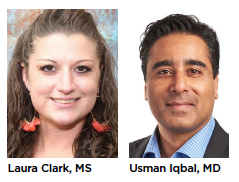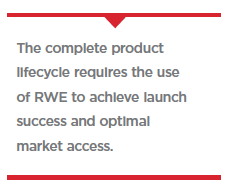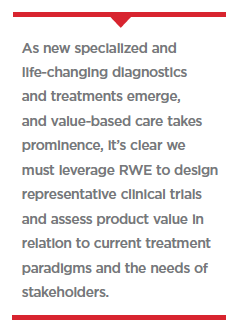 Our healthcare system has experienced a fundamental shift in stakeholders’ perceptions of product value and evidentiary thresholds to demonstrate comparative effectiveness, as well as a willingness by relevant decision makers to pay. This value-and-evidence-based landscape is now relying heavily on establishing real-world differentiation and has led to exponential growth in the demand for and conduct of formalized assessments of health technologies in such context for formulary coverage and reimbursement purposes.
Our healthcare system has experienced a fundamental shift in stakeholders’ perceptions of product value and evidentiary thresholds to demonstrate comparative effectiveness, as well as a willingness by relevant decision makers to pay. This value-and-evidence-based landscape is now relying heavily on establishing real-world differentiation and has led to exponential growth in the demand for and conduct of formalized assessments of health technologies in such context for formulary coverage and reimbursement purposes.
With advancements in big data technologies and the sophistication of health information exchange, payers and providers are building analytic capabilities to identify real-world unmet needs, along with areas of cost containment and efficiency. The development of digital medicines, apps, wearables, and biosensors that gather and store large amounts of health-related data has also accelerated. So, given the number of converging factors, how do we ensure that patients have access to the medicines they need, when, and where they need them?
How does real world evidence (RWE) help ensure market access?
 As manufacturers are developing new innovative medicines and healthcare interventions that disrupt traditional treatment paradigms, it’s critical they demonstrate product value from a real-world standpoint through rigorous scientific evidence on reduction in burden of disease, limitations of other therapies, improved outcomes, and key points of differentiation. RWE allows life-sciences companies to benchmark target product profiles and effectively deliver against increased payer expectations in the quantification of value and outcomes as it relates to product innovation and real-world impact.
As manufacturers are developing new innovative medicines and healthcare interventions that disrupt traditional treatment paradigms, it’s critical they demonstrate product value from a real-world standpoint through rigorous scientific evidence on reduction in burden of disease, limitations of other therapies, improved outcomes, and key points of differentiation. RWE allows life-sciences companies to benchmark target product profiles and effectively deliver against increased payer expectations in the quantification of value and outcomes as it relates to product innovation and real-world impact.
Two Value and Evidence experts at EVERSANA weigh in on the following questions: Laura Clark, MS, Associate Research Scientist, and Usman Iqbal, MD, MPH, MBA, Scientific Advisor for RWE.
Why is RWE in such high demand, and how do payers, providers, patients, and manufacturers benefit?
The traditional efficacy paradigm of clinical trials poses an uncertainty for payers and providers looking for effectiveness vs efficacy, meaningful cost savings, and a broad-based product value profile that includes clinical, patient, and economic value. RWE bridges this gap between efficacy and effectiveness and gives us the ability to:
1. Map the patient journey in actual clinical practice and measure value-based aspects of care not traditionally assessed in trials such as costs, adherence, and health resource utilization.
2. Study broader patient populations, and assess various gaps and unmet needs, to design more patient-centric trials that address uncertainty in terms of real value to stakeholders.
 The patient-centric paradigm shift has now facilitated patient-reported outcomes (PROs) to be routinely integrated into clinical trial design to assess the impact of the drug on patients’ health related quality of life, and patient access solutions now being implemented by payers to improve patient outcomes and quality of care. Furthermore, continuous efforts are being made to include the broader patient perspective in development as well as market access strategies. RWE is the most effective tool to gather patient insights to understand what outcomes are meaningful to the efficiency and quality of care, and medication outcomes that matter to patients. On the provider front, physicians are advancing their RWE and data generation capabilities to assess gaps in clinical care, monitor patient outcomes and key performance metrics relevant from a reimbursement standpoint.
The patient-centric paradigm shift has now facilitated patient-reported outcomes (PROs) to be routinely integrated into clinical trial design to assess the impact of the drug on patients’ health related quality of life, and patient access solutions now being implemented by payers to improve patient outcomes and quality of care. Furthermore, continuous efforts are being made to include the broader patient perspective in development as well as market access strategies. RWE is the most effective tool to gather patient insights to understand what outcomes are meaningful to the efficiency and quality of care, and medication outcomes that matter to patients. On the provider front, physicians are advancing their RWE and data generation capabilities to assess gaps in clinical care, monitor patient outcomes and key performance metrics relevant from a reimbursement standpoint.
Why are more companies leveraging RWE pre- and post-clinical trials?
Market access is often considered at the time of a product launch. However, ensuring market access is a continuum process that relates equally to development and post-launch time periods as well. Real-world knowledge of the patient journey, different clinical phenotypes, and the burden of disease gives us insight into designing patient-centric trials with the right populations, subgroups, comparators, and value-based endpoints that are meaningful to stakeholders. Similarly, as markets mature and the number of new entrants increases, protecting market access and market share becomes critical. RWE can facilitate comparative effectiveness, help determine new product insights, and differentiate products with respect to broad-based outcomes such as medication adherence, patient satisfaction, resource utilization, and associated costs. Hence the complete product lifecycle requires the use of real world evidence to achieve launch success and optimal market access.
How can manufacturers overcome today’s market access challenges and demonstrate value while addressing critical data gaps?
While it is necessary to establish the broadest market access possible with the most favorable pricing at this time point, it’s also important for manufacturers to understand that innovation must be linked with real-world unmet needs and the ability to bring overall cost savings to the healthcare system.
Healthcare providers and payers want to achieve the highest levels of population health but often must function within financial restraints. To inform the selection of which healthcare technologies are funded — precision medicine in terms of positioning the right drug for the right population — as well as demonstrating both clinical and economic value is essential. There is, at times, a disconnect between the evidence required for regulatory approval and evidence required for coverage and reimbursement. For market access to be seamless after FDA approval, we recommend manufacturers harness a 3P (patient, provider, payer) stakeholder-driven end-to-end RWE strategy, spanning development to post-launch, to understand competitive positioning, crystallize target product profiles, and produce compelling evidence-based value stories that address unmet needs and economic utility in well-defined patient populations.
How can we effectively communicate value to each stakeholder leveraging the most effective evidence to ensure market access?
Gaining and sustaining market access requires deep knowledge of key stakeholder needs and values. Product-specific attributes and benefits, when understood and communicated properly in the real-world context, ultimately drive value and market success. This requires an integrated strategic approach that includes engaging the right stakeholders, systematically gaining and bringing insights from stakeholders back to the organization, and intricately linking different value and evidence perspectives with corresponding target product profiles.
As new specialized and life-changing diagnostics and treatments emerge, and value-based care takes prominence, it’s clear we must leverage RWE to design representative clinical trials and assess product value in relation to current treatment paradigms and the needs of stakeholders.
Besides payers and drug manufacturers, clinicians and leading patient organizations are also leveraging RWE to support advancements in care, efficiency, and health outcomes. Simply put, RWE is informing and supporting decision making across the product lifecycle in a way that was simply not possible in the past. However, what defines success in today’s expanding RWE world is the overall expertise in design, analytics and application of data, and strategic acumen to maximize its impact across the customer value chain.(PV)
EVERSANA is the leading independent provider of commercial services to the life-sciences industry.
For more information, visit eversana.com.

















